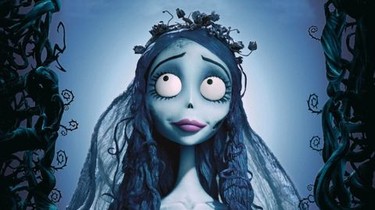Film review: Blue is the Warmest Color

Photo by Ana P
“My heart was missing something but it did not know what it was,” writes Pierre de Marivaux in his unfinished novel La Vie de Marianne. This feeling of anxiety is never far from Adèle, the central character played by actress Adèle Exarchopoulos, in Abdellatif Kechiche’s film Blue is Warmest Color. While on her way to a date with a boy from school, Adèle first set eyes on Emma.
Actress Lea Seydoux who played Emma had cropped, blue hair and has her arm around another woman. Adèle pretends she does not see the couple, but finds she cannot look away. As they pass on the cross walk, they both exchange looks. Emma only shoots Adèle a quick glance, but it is enough to leave her frozen in the street. To continue Marivaux’s quote, “I say [my heart] did not know. Perhaps it did.”
Taking place over the course of several years, “Blue is the Warmest Color,” follows Adèle from her teenage years through her young adult life. Emma, initially an art student then turned painter, serves as Adèle’s guide into womanhood. The two become a couple while Adèle goes on to be a teacher and Emma follows her ambitious life as a painter with Adèle as her muse. Although the couple is in love, something divides them. Emma wants more of a creative life for Adèle, insisting she explore her talents as a writer. While, Adèle seems happy with her job as a teacher and Emma’s love. This division broadens into a further distinction between the two in terms of class.
In addition to dealing with issues of class, “Blue is the Warmest Color” is a beautifully crafted film which explores sexuality, love, loneliness and society. The story focuses on Adèle’s character. Throughout the film, the audience examines the themes through the lens of her life and actions, taking the film to a personal level. The camera never loses sight of Adèle and thus viewers are able to gauge her reaction to everything and everyone around her. Viewers see the effect her sexuality has on her relationship with classmates, parents, work life, and etc.
Throughout the film, we travel through years and settings while being seamlessly given enough information to help us understand more about the characters. For example, the scene where Adèle visits a beach and floats on her back in the water by herself while the sun hits her face, is one of the most beautiful of the film. At other times the artistry takes on a magical element. When Adèle visits a lesbian bar to meet Emma for the first time, she wanders through the crowd attempting to understand if this place holds the answer to the feelings she has been having. She nearly misses Emma, but she sees her.
The acting and the technical filmmaking intertwine to make this film complete. The acting is on par with some all-time great performances. Exarchopoulos, in her first film role performs brilliantly and subtly along with the great Seydoux. The film leaves viewers with many unanswered question and wanting more. Audiences have come to know Adèle at such a deep level the idea of not seeing her again seems preposterous.
Thomas Denman can be contacted at [email protected]





